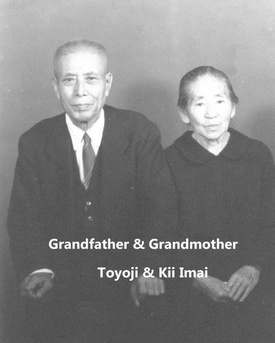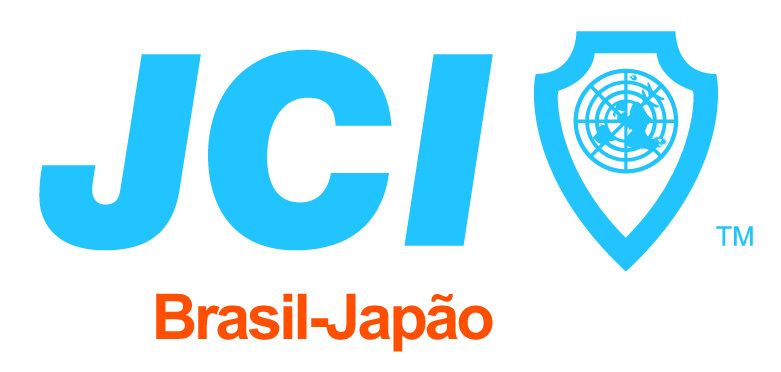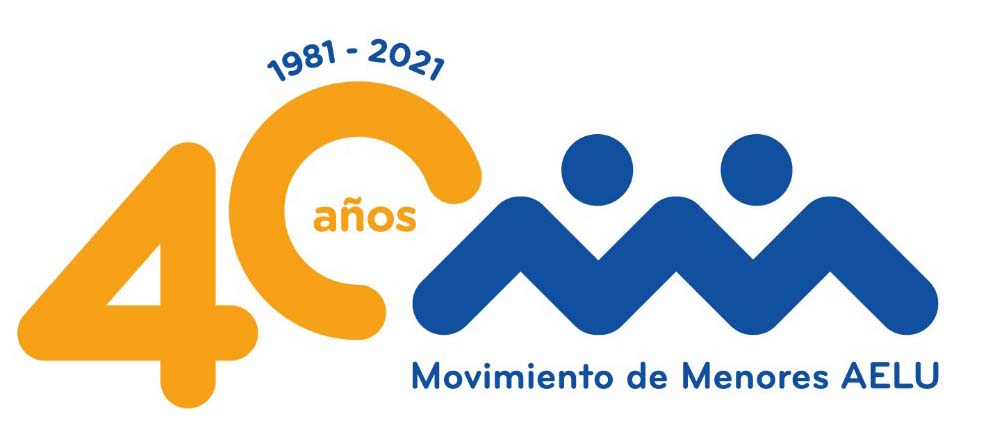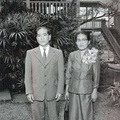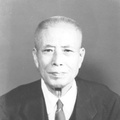Grandmother Kii Imai (1873-1964) displayed her humbleness, respect for all forms of life, her debt of gratitude for everything, and her meekness. She was not as well educated formally as grandfather, but yet understood the nature of man and lived a life of gratitude. She greeted everyone with a deep bow, always with a smiling face. Unlike grandpa, she was the one who tilled the soil and took care of the back yard garden and grew vegetables for the family. She even taught me to sharpen the hoe using a flat file. She would put present day conservationists to shame because she was practicing composting back in the ‘30s.
Grandmother and I often went to the sawmill at the outskirts of the camp to fill our burlap bags with ohia log chips and dust and put them into the vegetable garden. She would also bury all kitchen wastes back into the garden by digging a hole in some corner of her plot, placing the waste in it, and filling the cavity with soil. She once hurt herself badly in an attempt to remove a large boulder to clear the pathway to the camp. What she was attempting to do was not her responsibility, but she chose to make the path safe for all concerned, for the welfare of others.
My grandmother and I had many moments together, often over a can of salmon and rice, engaged in wonderful heart-to-heart discussions. She would advise on several topics and pointers: honoring your family, always being prepared, never being wasteful, doing your best in everything, and on and on. She has always been my guiding light.
She had a human side too. I never saw her get upset over anything but there was a moment when grandma was mending her clothing, using her antiquated sewing machine, when grandfather shouted, “Oi, Oi”, (Hey you), seemingly in a derogative manner, shouting for grandma. She was almost teary and muttered, “He’s taking me for a fool,” and she refused to reply. But then after a few minutes, grandpa shouted again, “Oi, Oi”, this time she replied, “Hai”, (yes) and she rushed to grandfather in compliance.
Grandpa and Grandma Imai were extremely frugal and mindful of all physical resources. Nothing was discarded; they made wise and maximum use of everything, including food items. (Not a grain of rice was wasted.) Grandpa and grandma were not in the habit of throwing things out, which is such a prevalent practice today. In fact they had a special structure adjoining their home just for storage; this doubled as a tool shed. In it the family stored parts for the car, possibly an inventory of unsold goods from the store that grandfather operated, scrap pieces of lumber, grandma’s manual noodle-making machine, and even a hand-operated cotton gin. (I often helped grandma remove the seeds from the wads of cotton balls by operating the hand crank while grandma fed the machine with pods of cotton that she harvested from her cotton plants in the garden).
Grandmother was a deeply devoted and religious person. Upon awakening in the morning, she faced towards the rising sun and offered her prayers (thanking her Shinto god for the day and its blessings). Grandma also maintained a family Buddhist altar, which was always adorned with fresh flowers, in her bedroom. She offered prayers to her ancestors on a daily basis, twice a day upon awakening in the morning and again in the evening before retiring. She always grieved over the loss of her brother in Ola’a and she went into the details of the accident time and time again.
Grandma’s brother, Munejiro Hochi, encountered a tragic accident when he was out one evening with his fellow camp resident. They both had consumed some sake earlier and were on their way home. At the entry to the camp, there was an elevated railroad track that terminated at Keaau Store, forming a kind of an overpass so to speak. The overpass was situated high enough that people walking into the camp could negotiate entry without any problem. However anyone making entry into the camp on a carriage or wagon had to duck or stoop down in order to clear the track above. Father’s uncle, Munejiro, was the rider on the wagon that night and his companion, the driver. They both made a very swift and speedy entry into the camp and dad’s uncle failed to duck as they approached the impending danger ahead. Grandma said that her brother was almost decapitated in the accident.

Perhaps grandfather offered his prayers in his own way but I never did witness him in any religious practice. I must say, however, that he was a person of great tolerance and was extremely liberal in his thoughts for his time. I was told by Uncle Richard that grandfather once gathered his family before the war (World War II), and told them that America was a place in which religious freedom was highly regarded and of prime importance. Although grandfather himself was a practitioner of Zen Buddhism, he told his children that each of them was free to follow his or her own religious choice of their own choosing.
As a result, my dad, who had a teaching position at the Ola’a Hongwanji Mission Language School, became a follower of Shin Buddhism, Uncle Masahide and Uncle Masanori became Christians, Uncle Richard followed my dad’s footsteps, and of all the eight surviving children, Uncle Robert was the sole offspring to adopt the family religion. As for my aunts, once they were married, they all embraced the religious affiliations of their respective husbands.
Grandfather could have suffered from obsessive compulsive behavior. Over the years, he accumulated a store of newspapers that filled one of Uncle Richard’s bedrooms in his rented cottage. The stacks of neatly folded newspaper were about four feet high, and from time to time, grandfather found it necessary to dispose some of this assemblage of newsprints. Before this could be accomplished, he deemed it necessary to “inspect” each issue of the newspaper, a page at a time. He unfolded the newspaper, grasping by one corner of the newsprint, and I, on the other end, received the print by the opposing corner. I then refolded the paper and formed a new stack of inspected papers. It took grandpa and me hours upon hours over many days to do this, until the entire roomful of newspaper was thoroughly inspected. It was only then that I was told to take the inspected paper downstairs, only to be incinerated in a safe clearing in the yard. Grandpa did not muster the assistance of other grandchildren or his children for this task. It had to be me, his favorite grandkid, who never asked, “Why?”
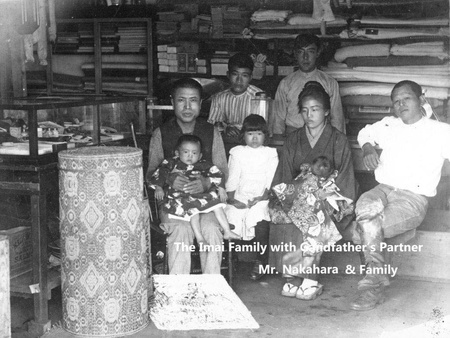
*This article is an excerpt from Our Nostalgic Heritage: Growing up in a Place Once Called Ola'a (2014) from pages 36 - 38.
© 2021 Akinori Imai



